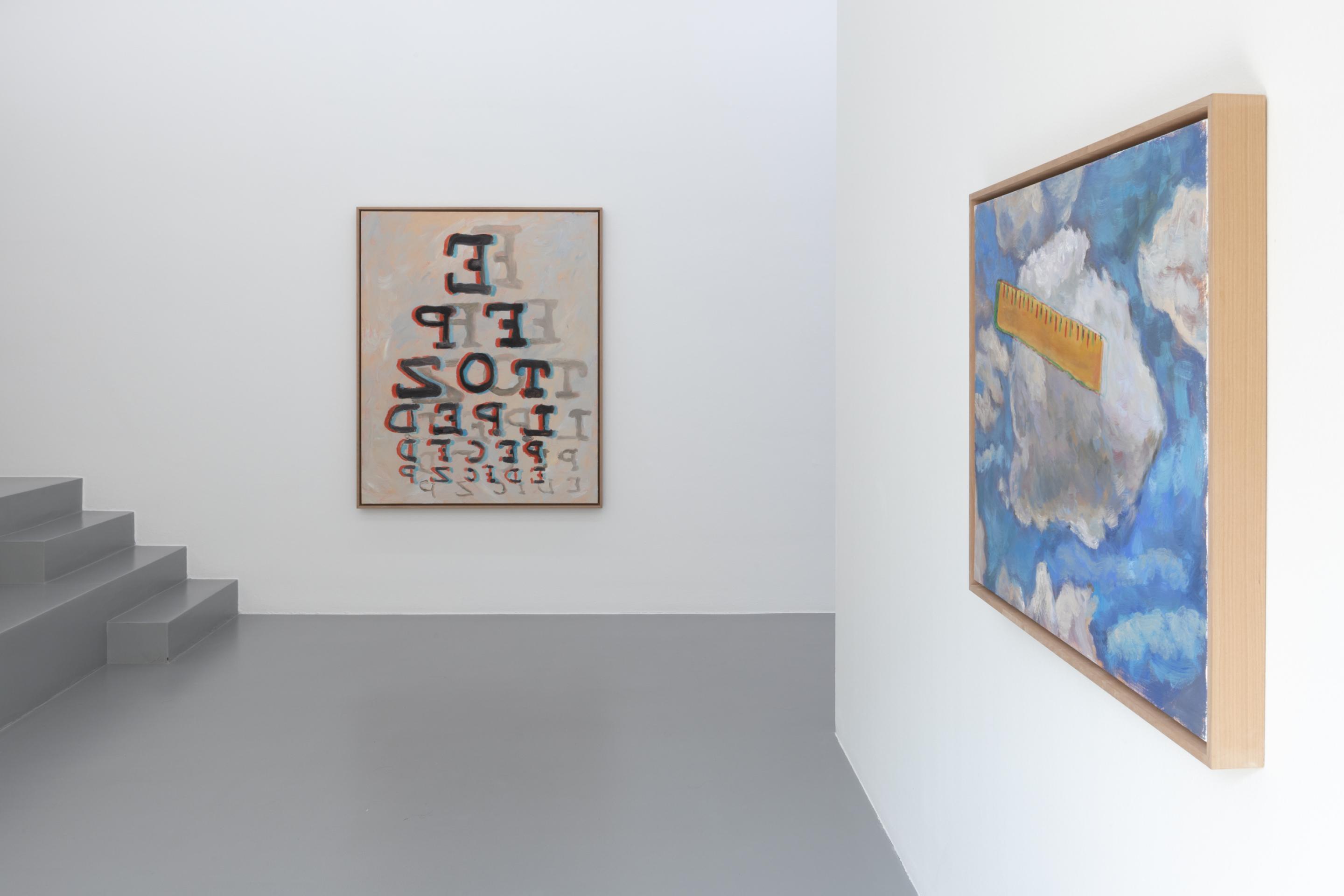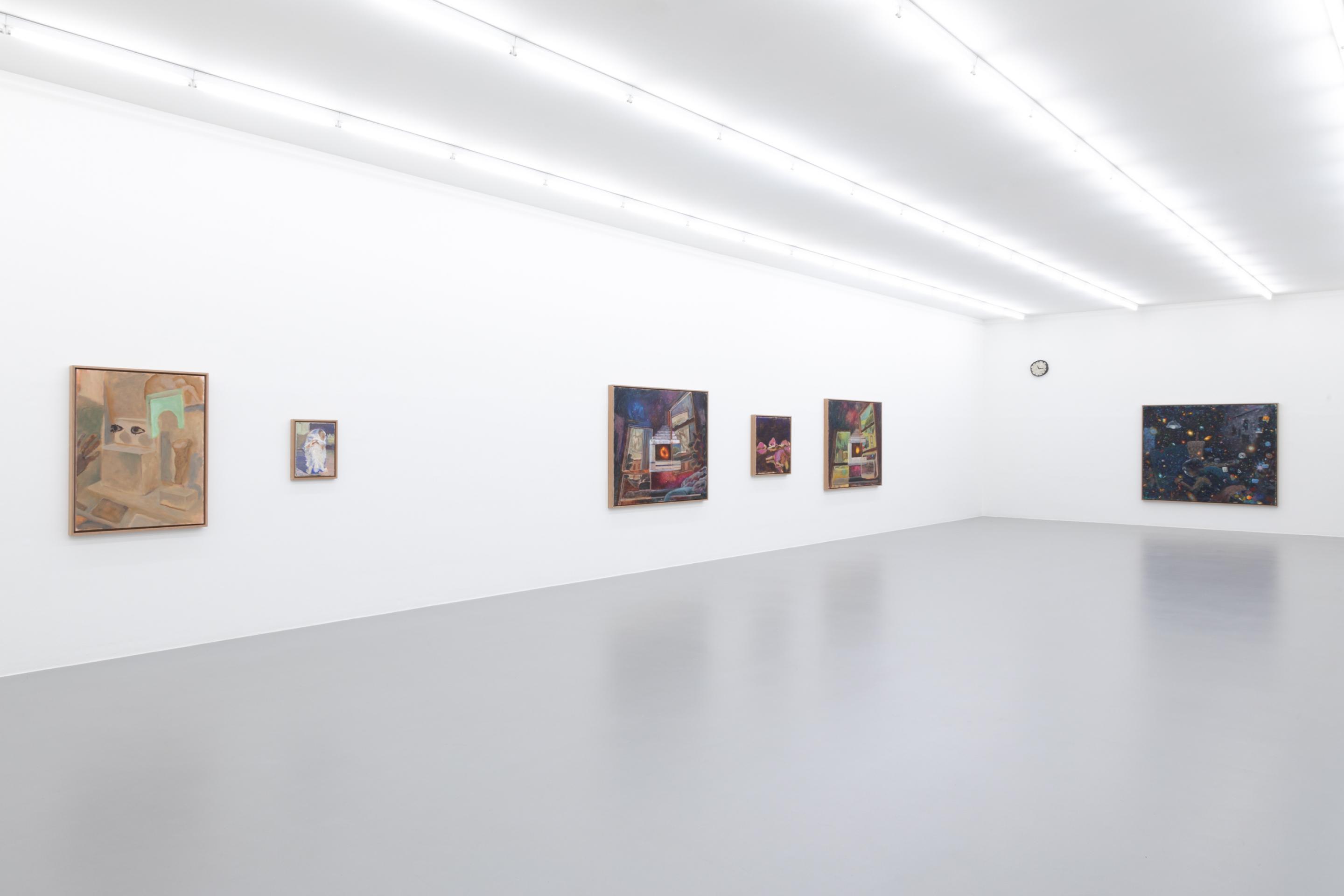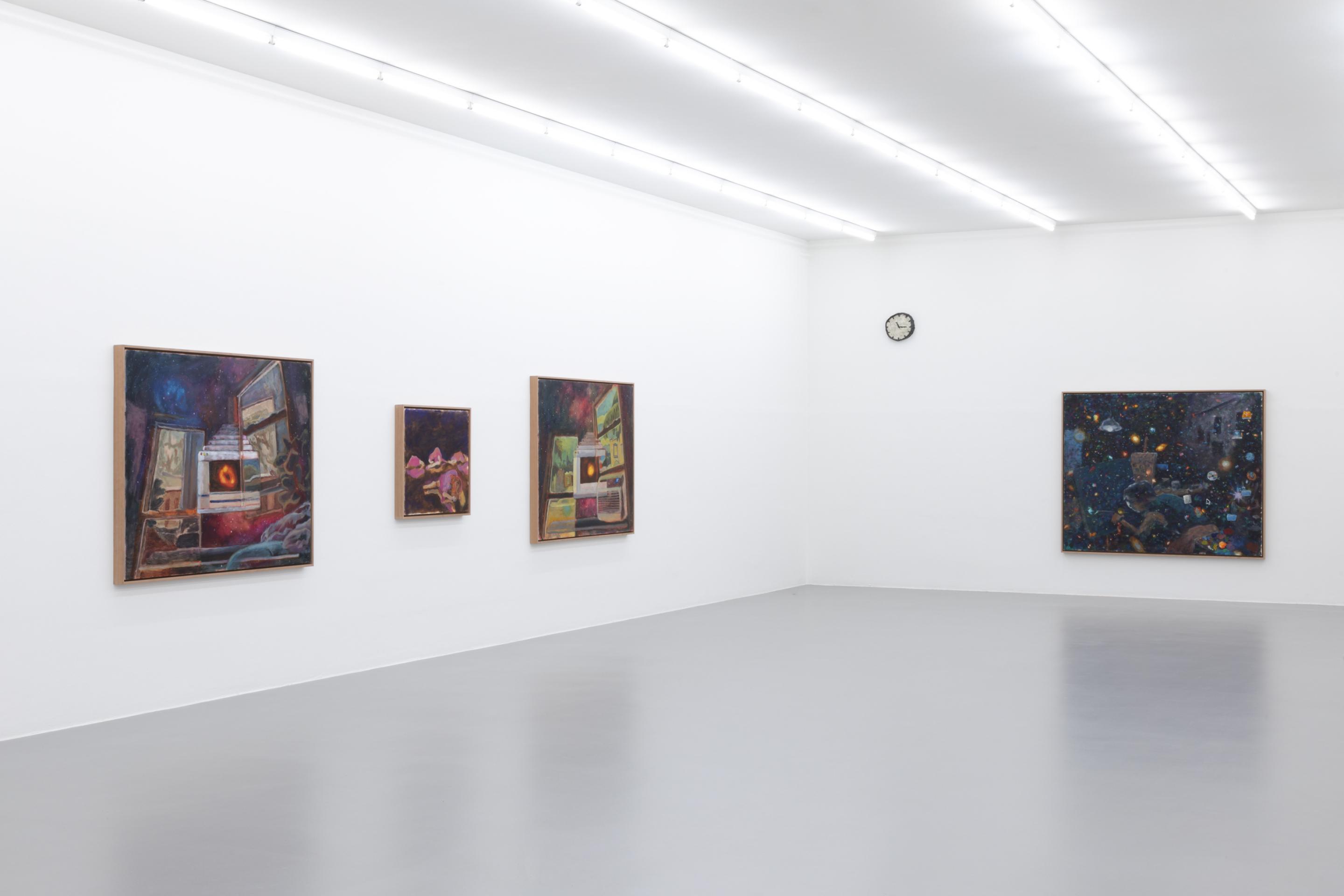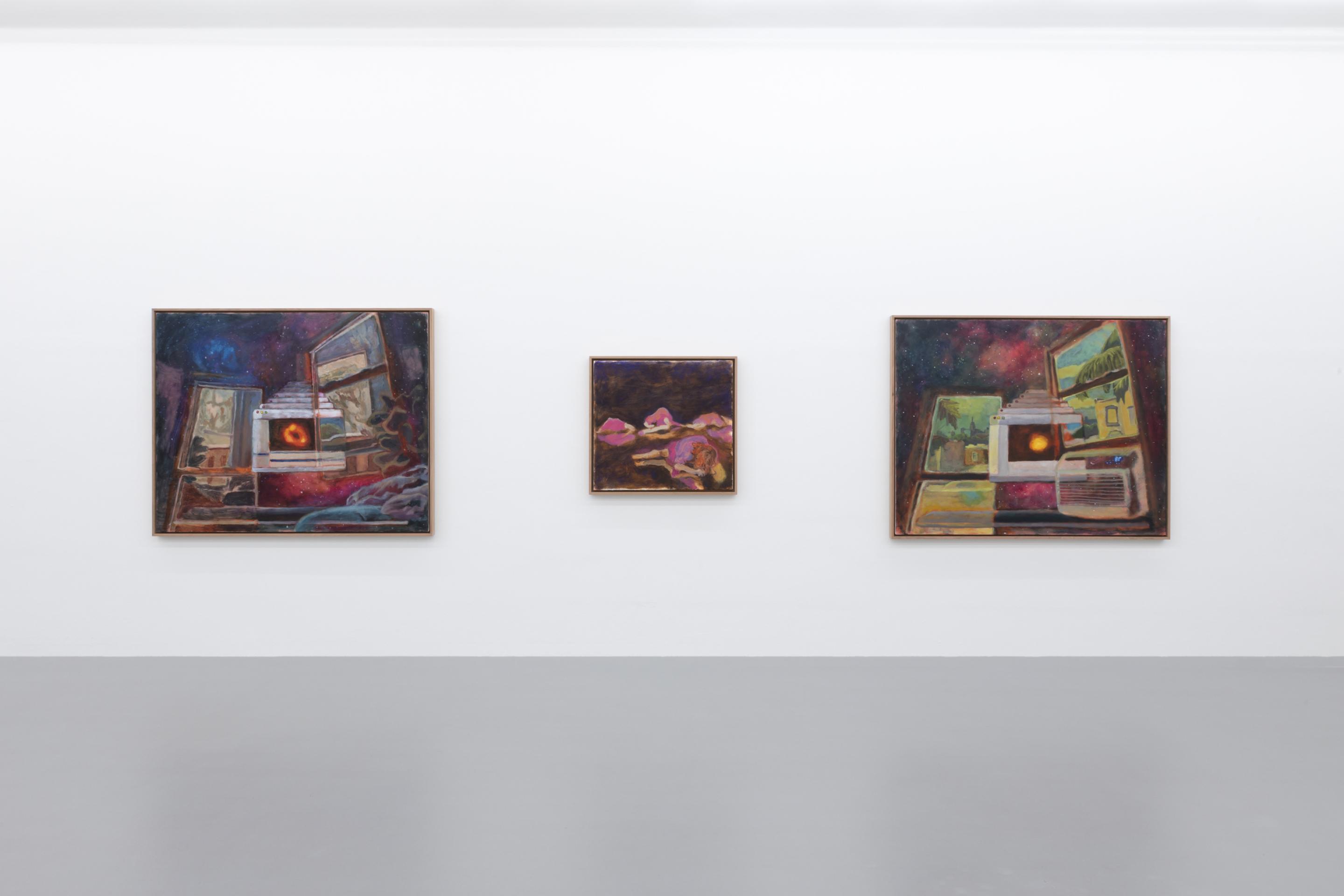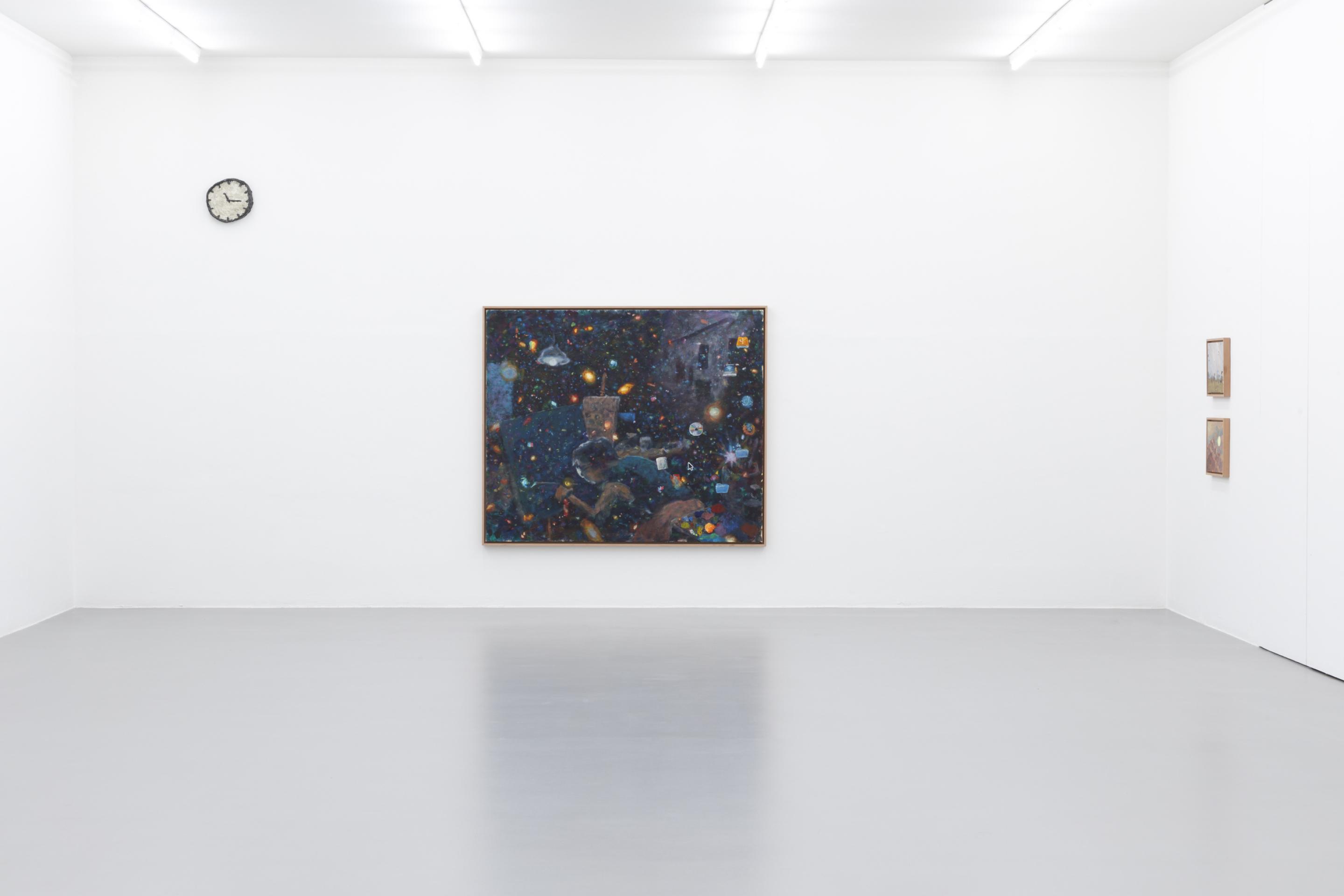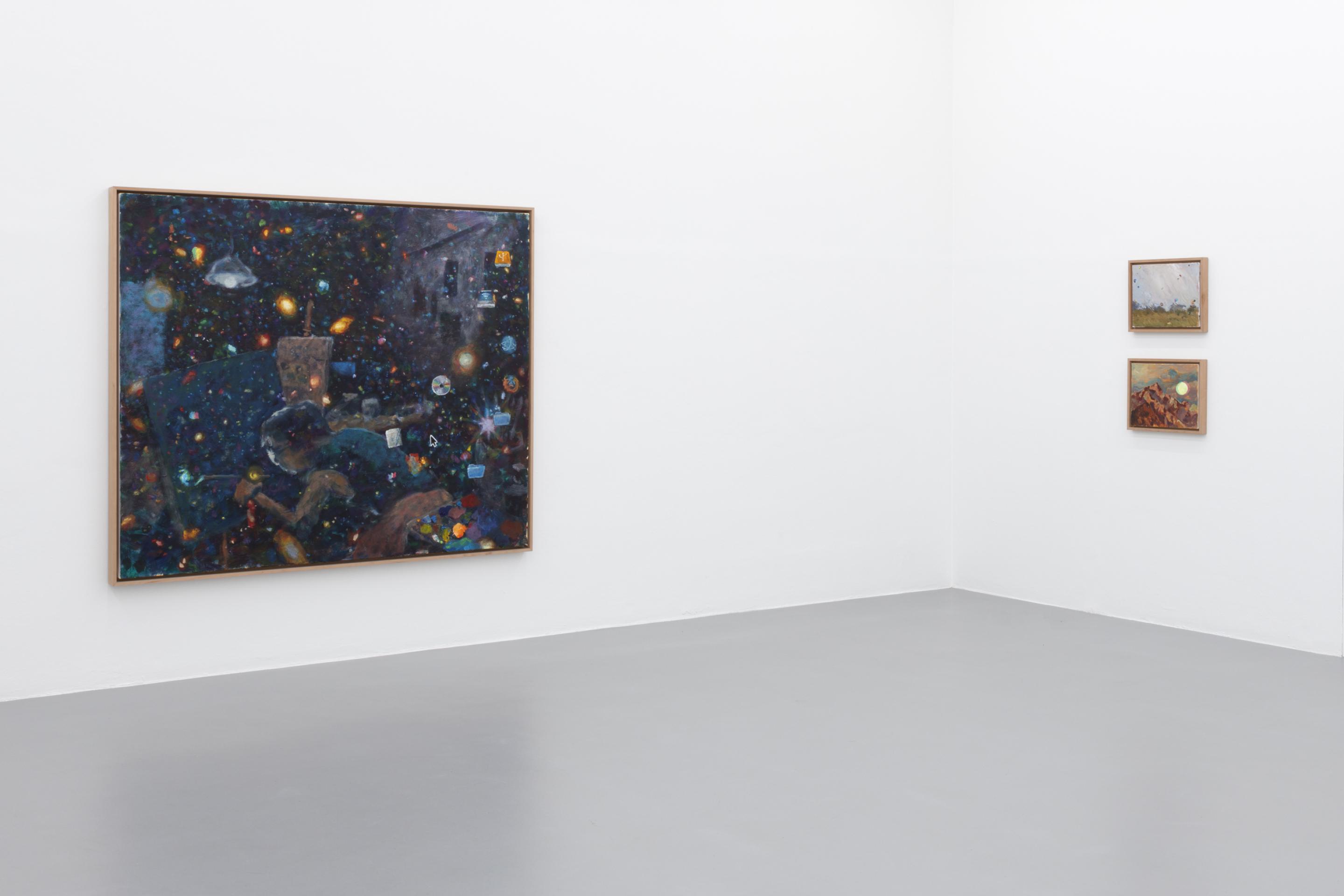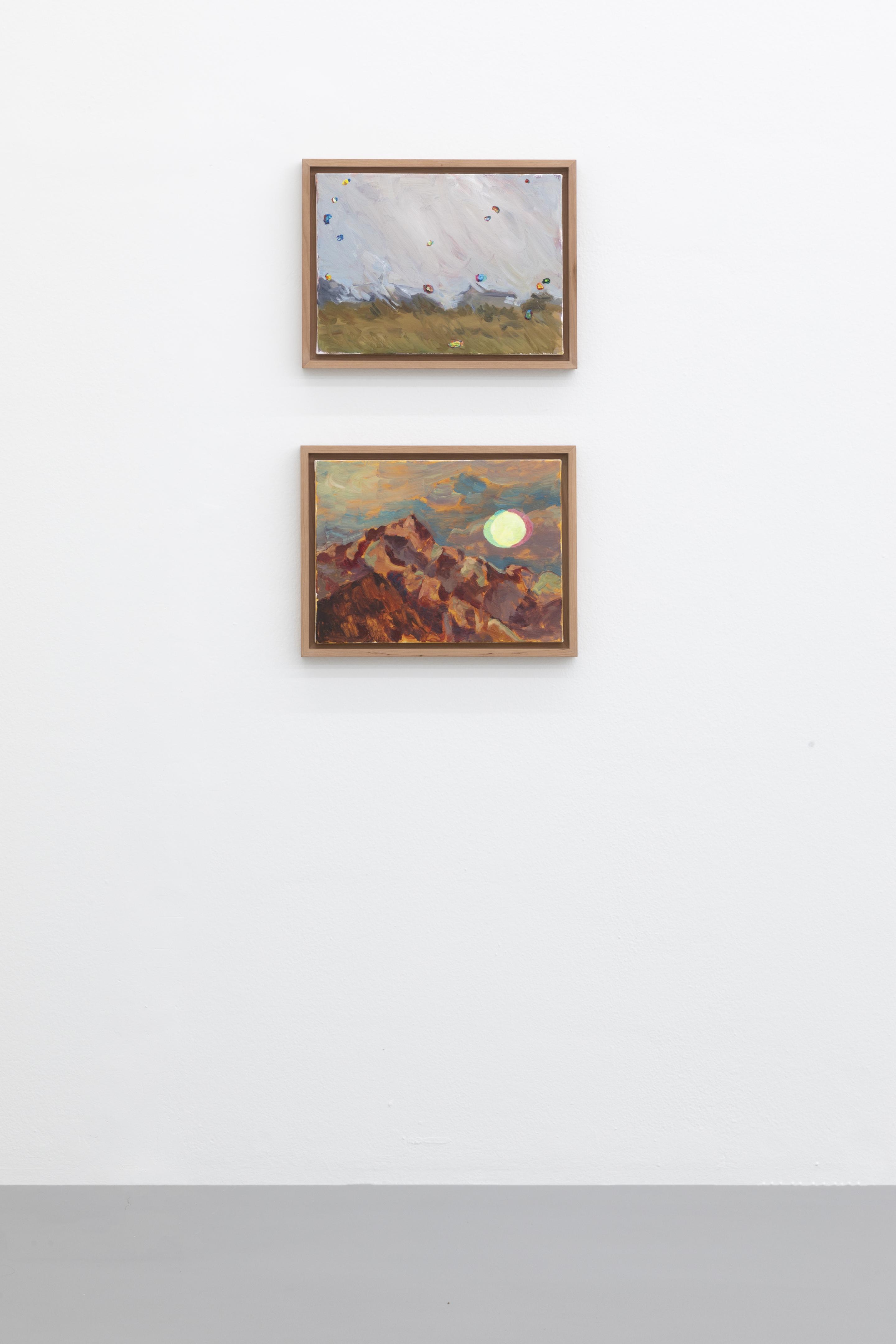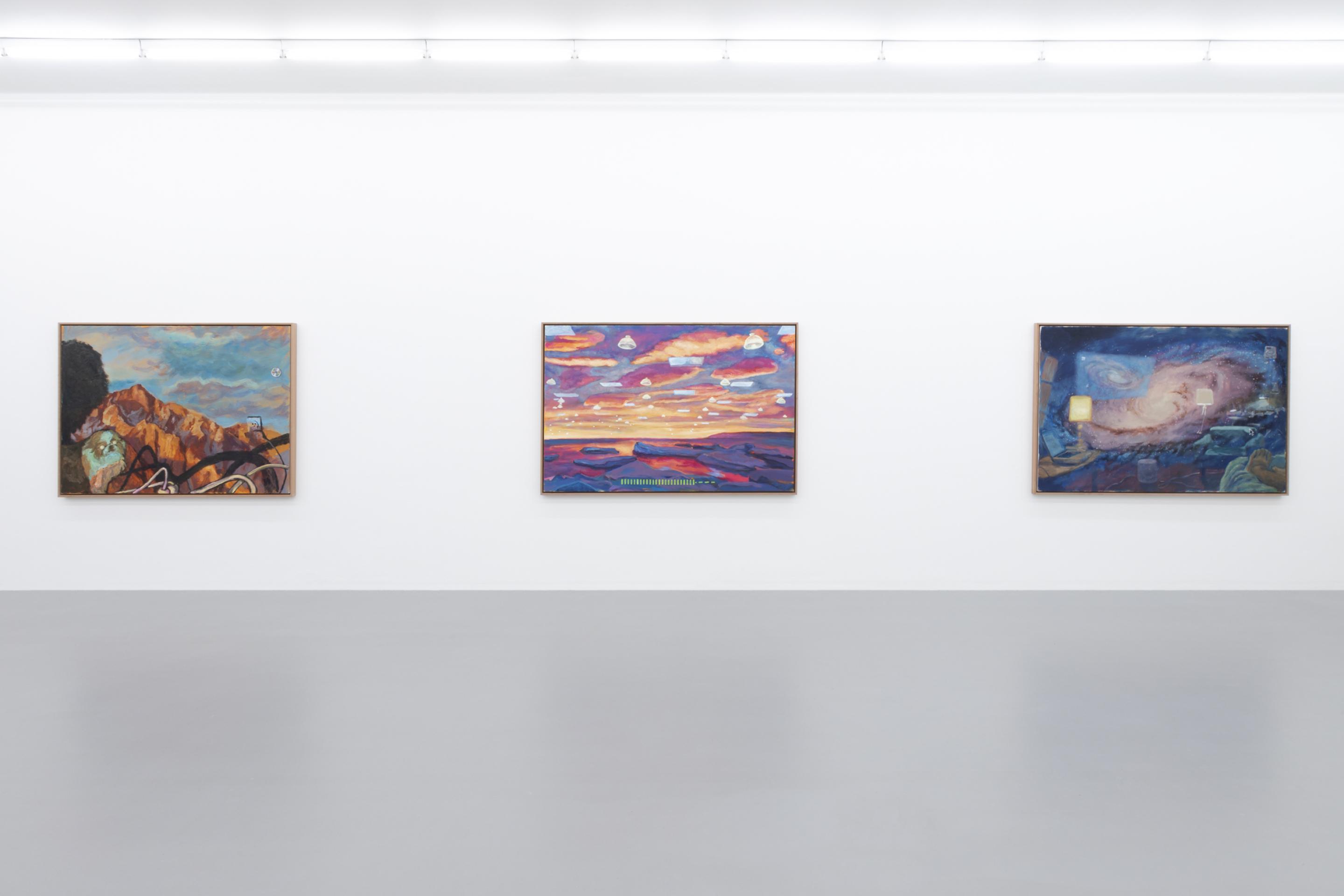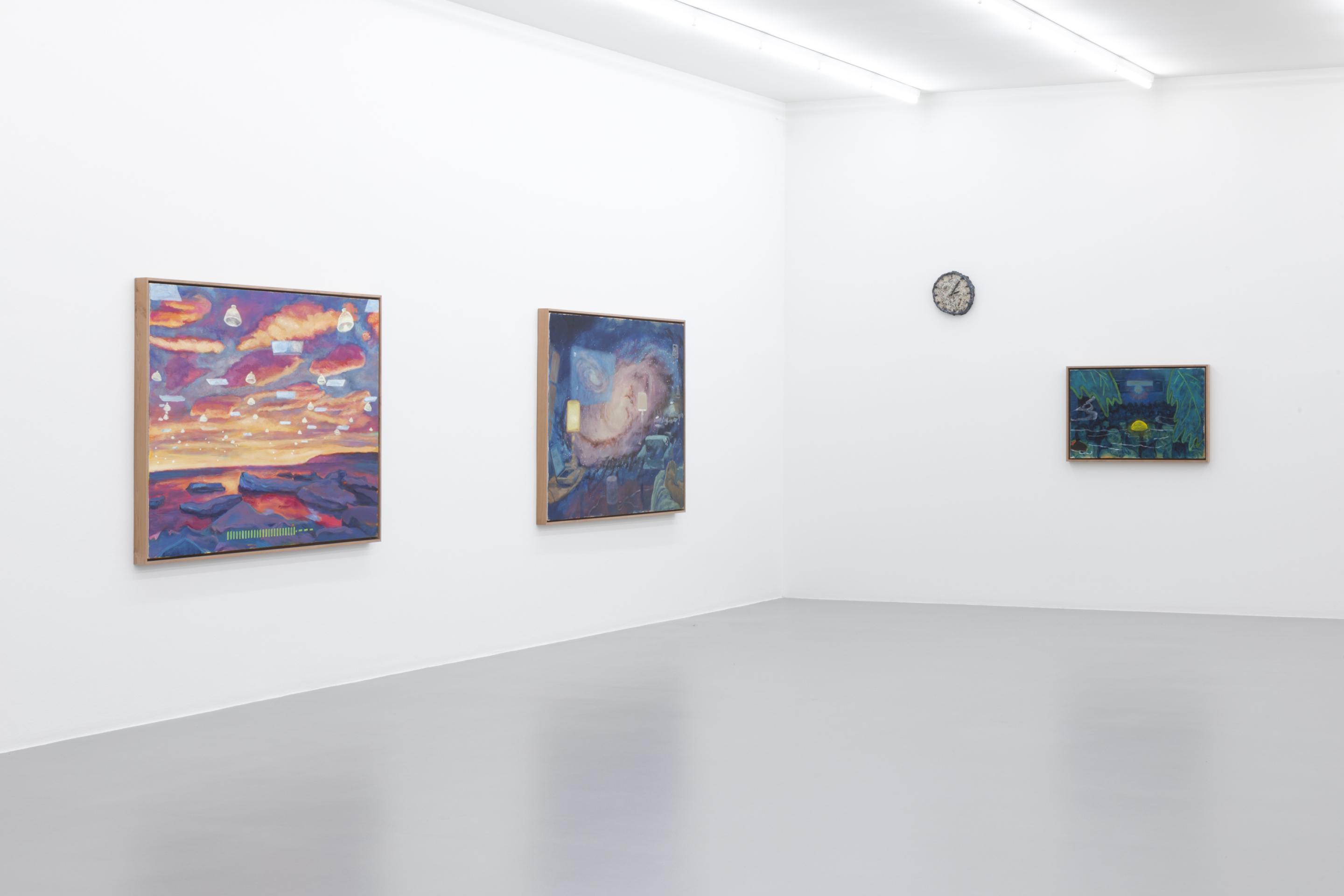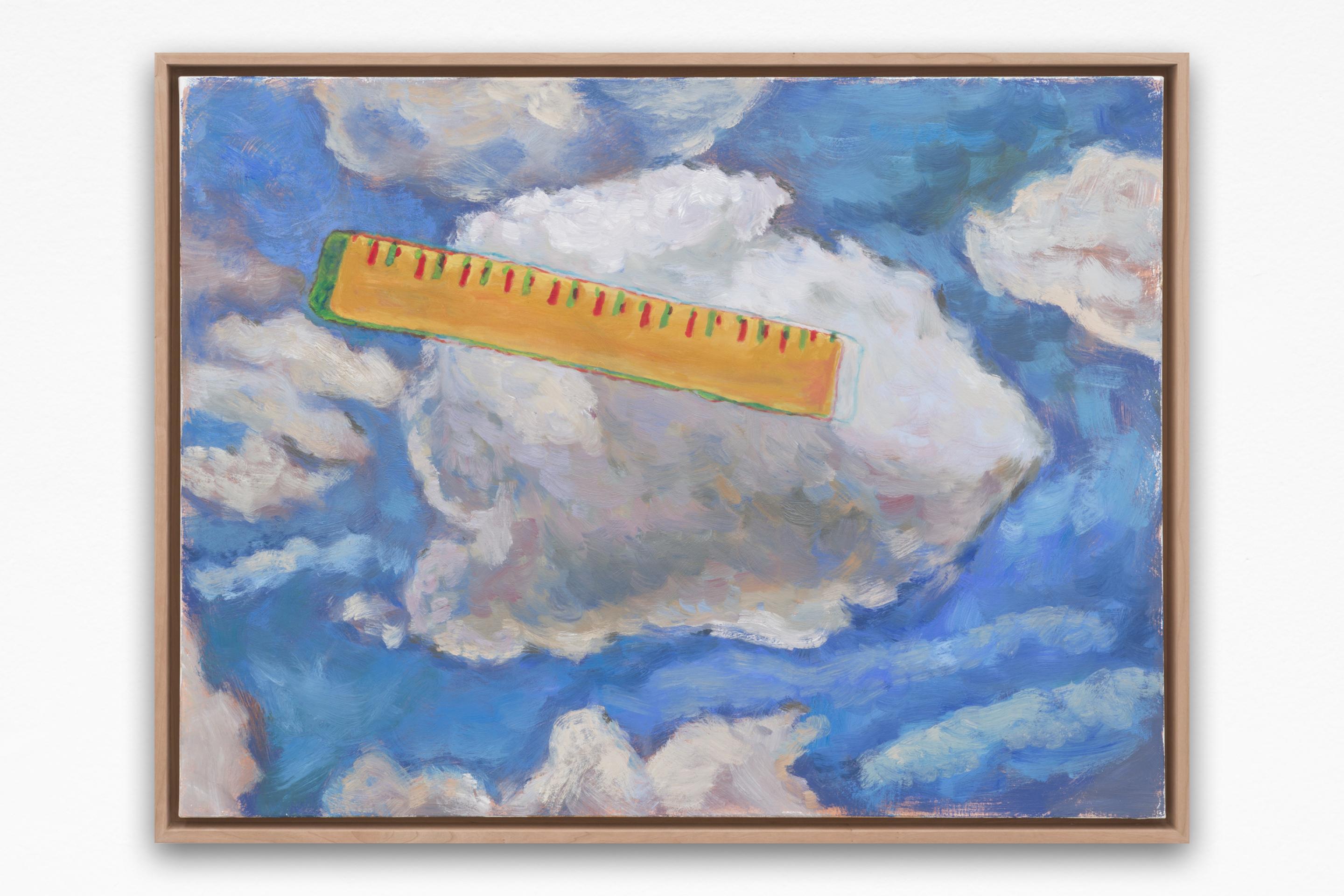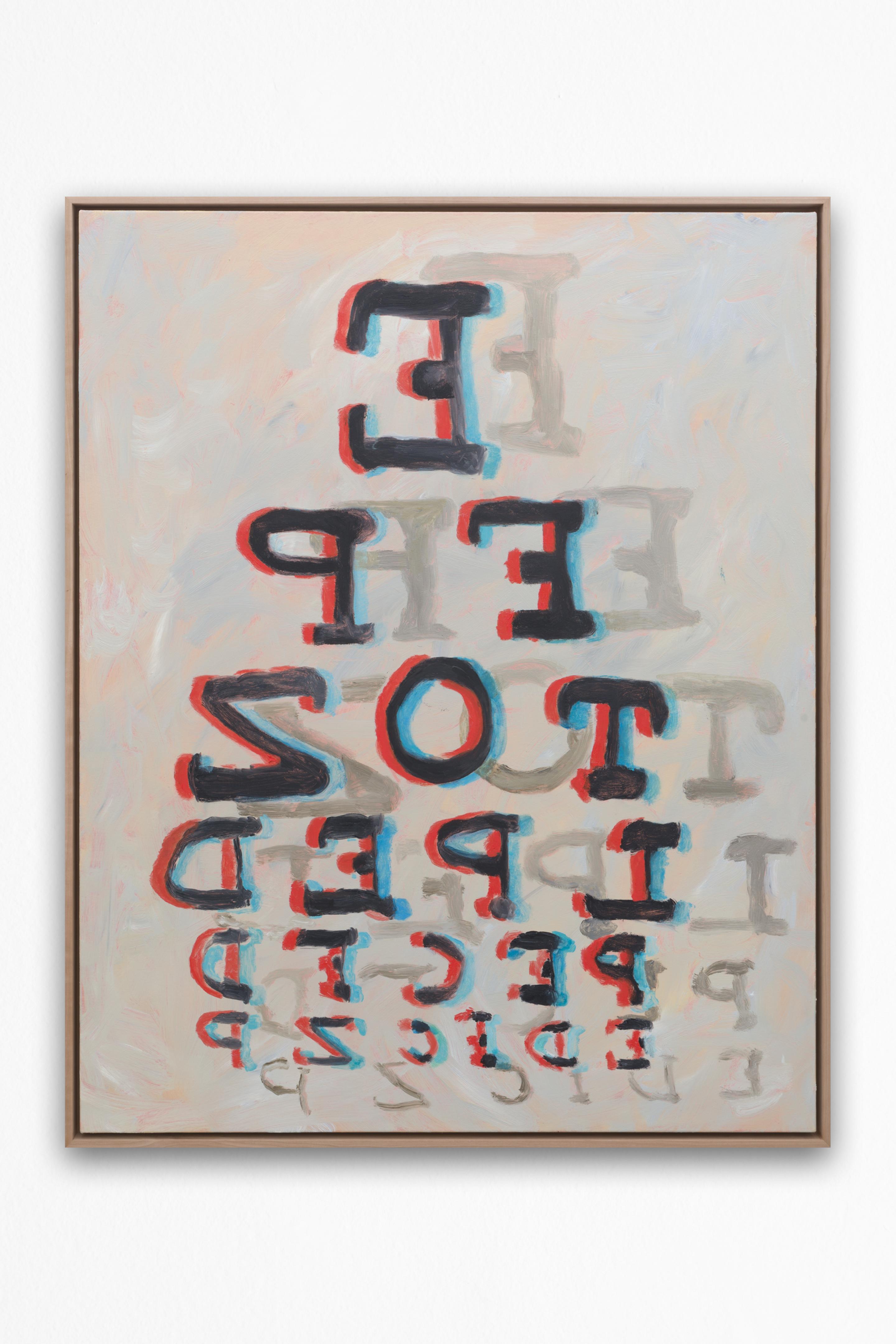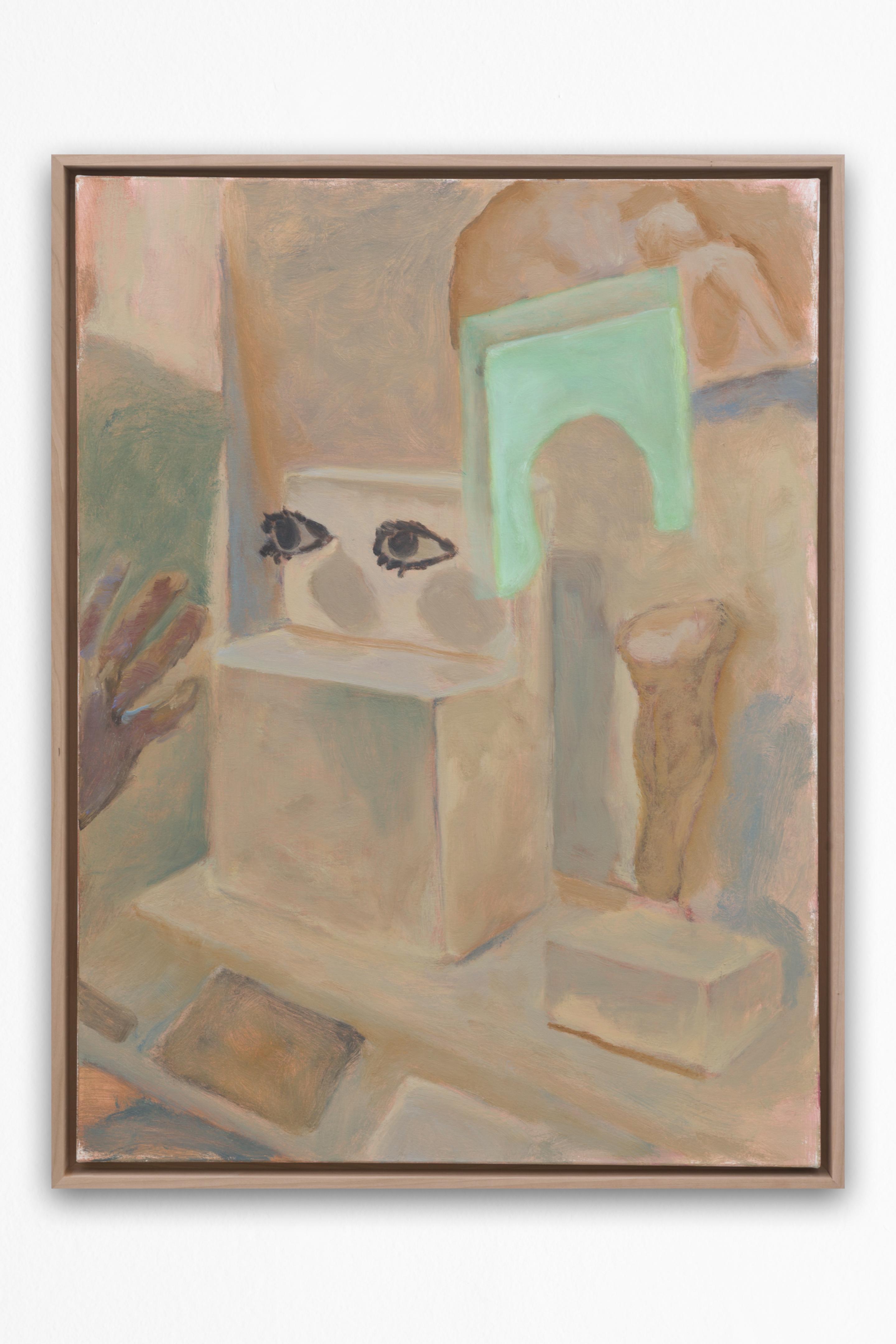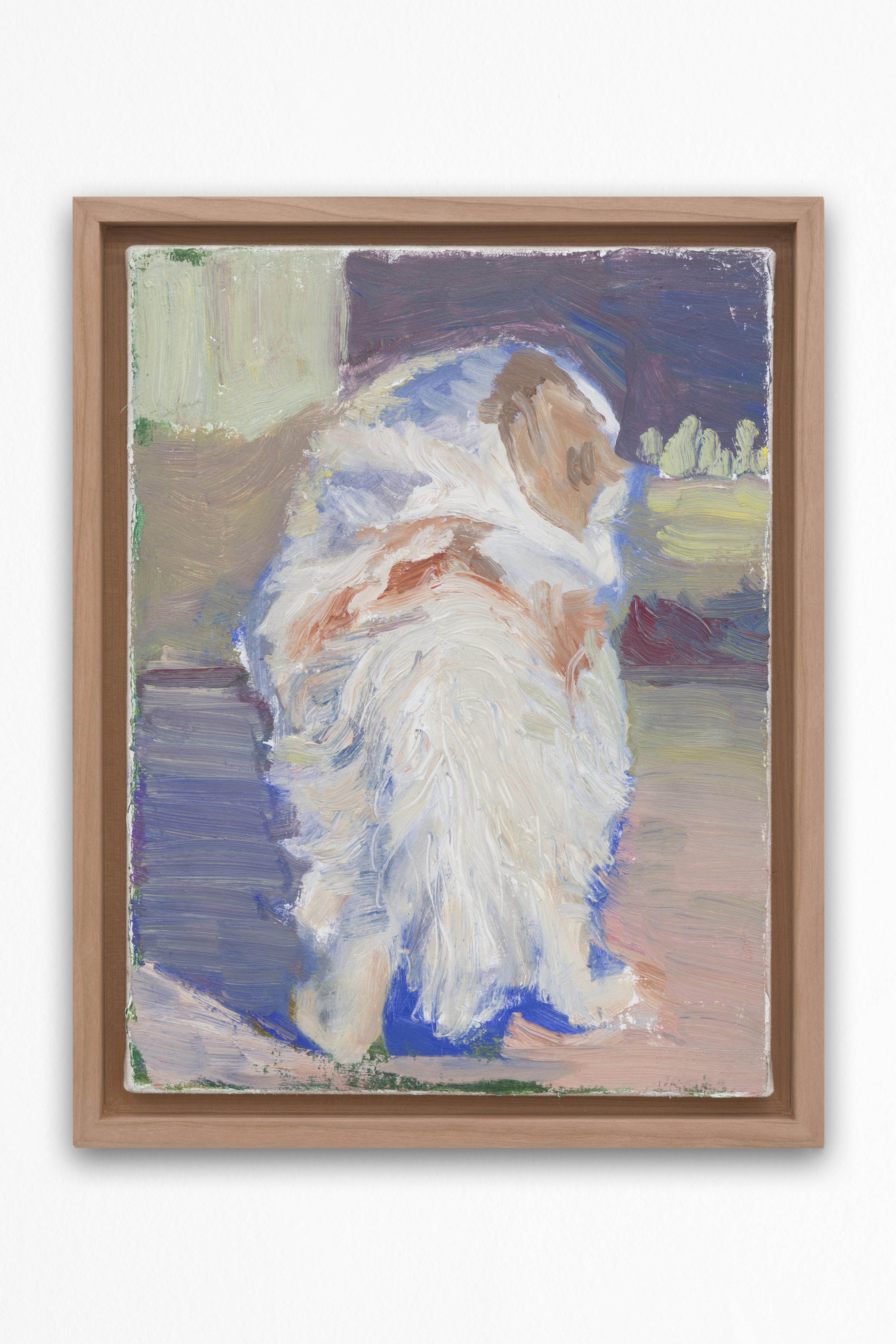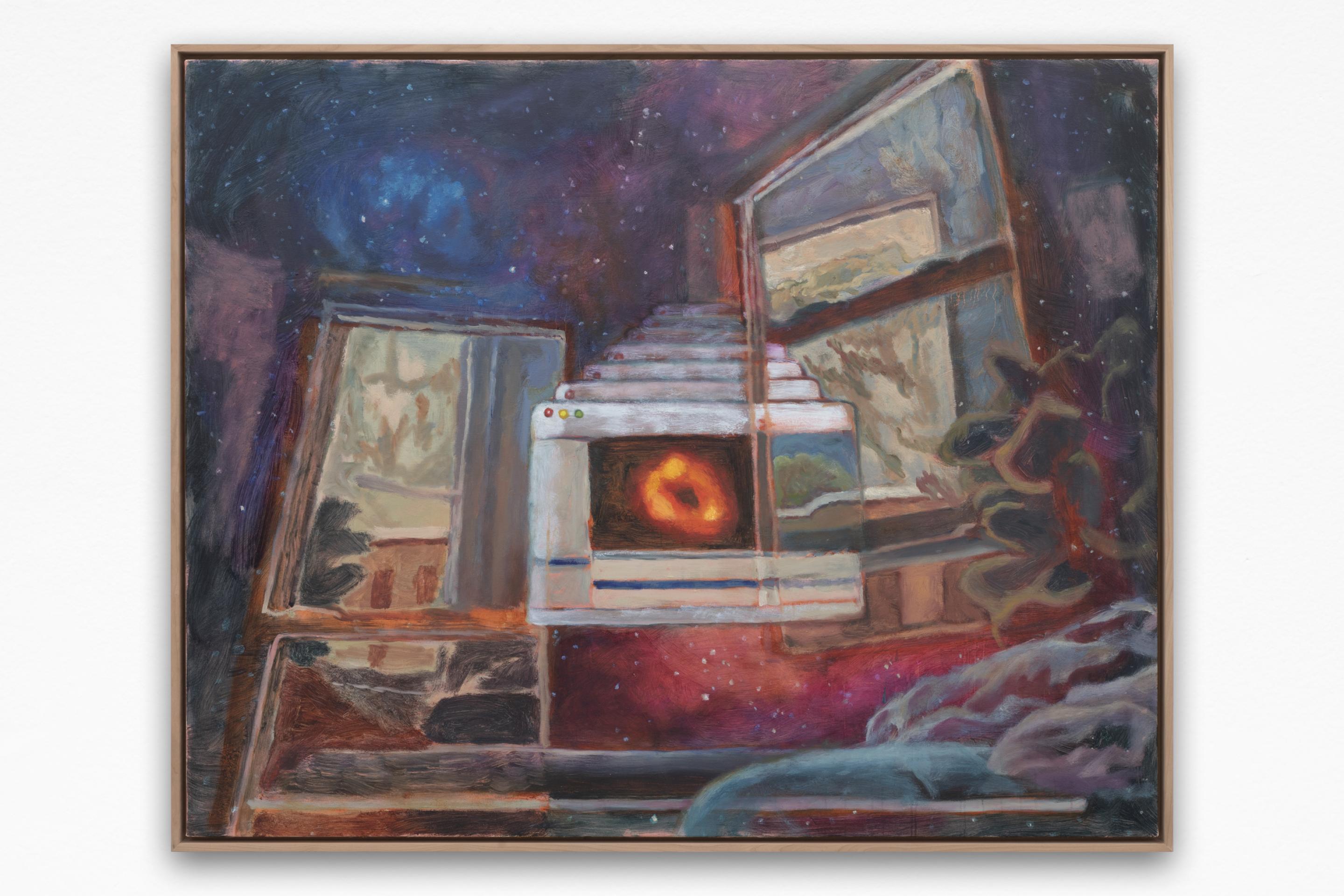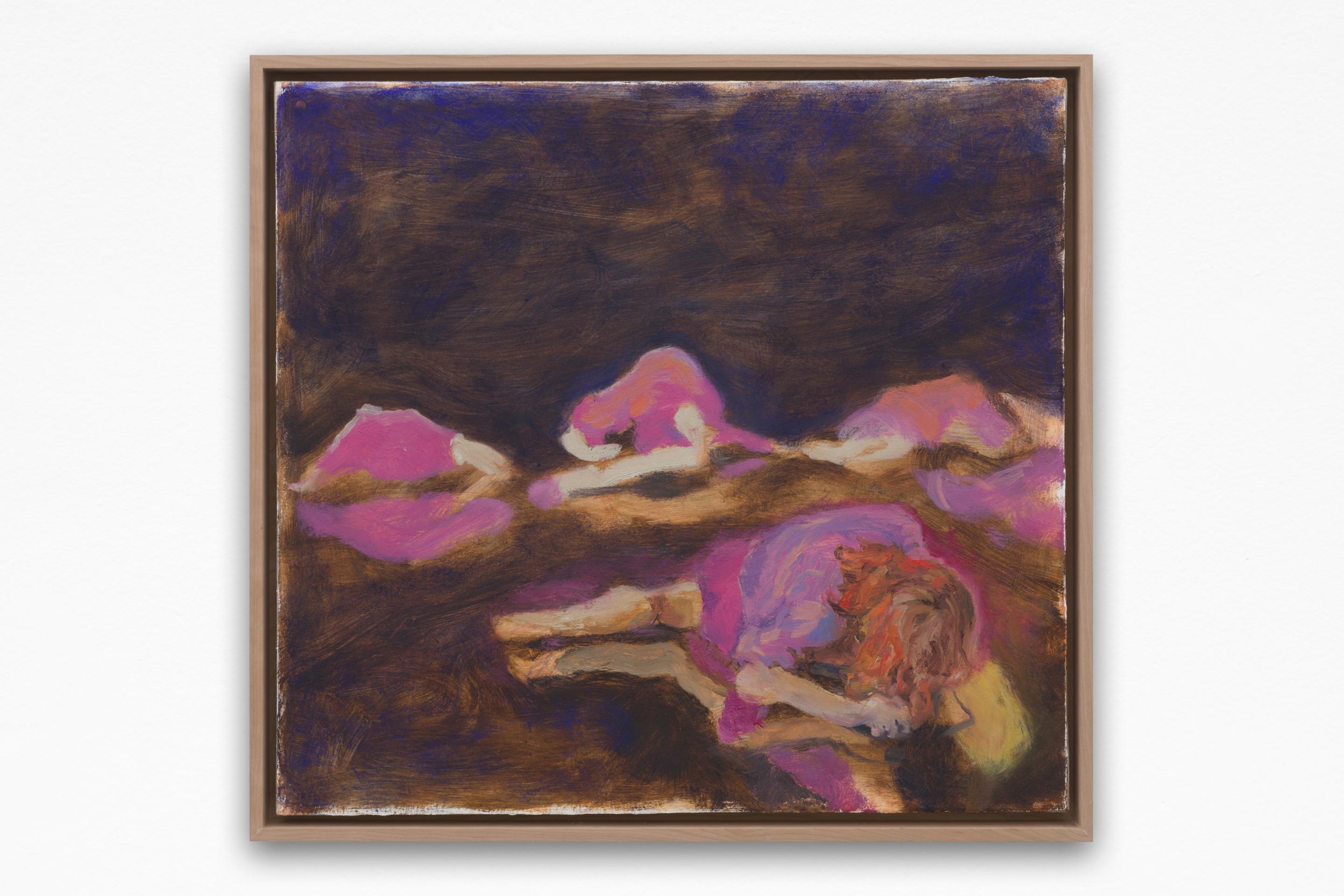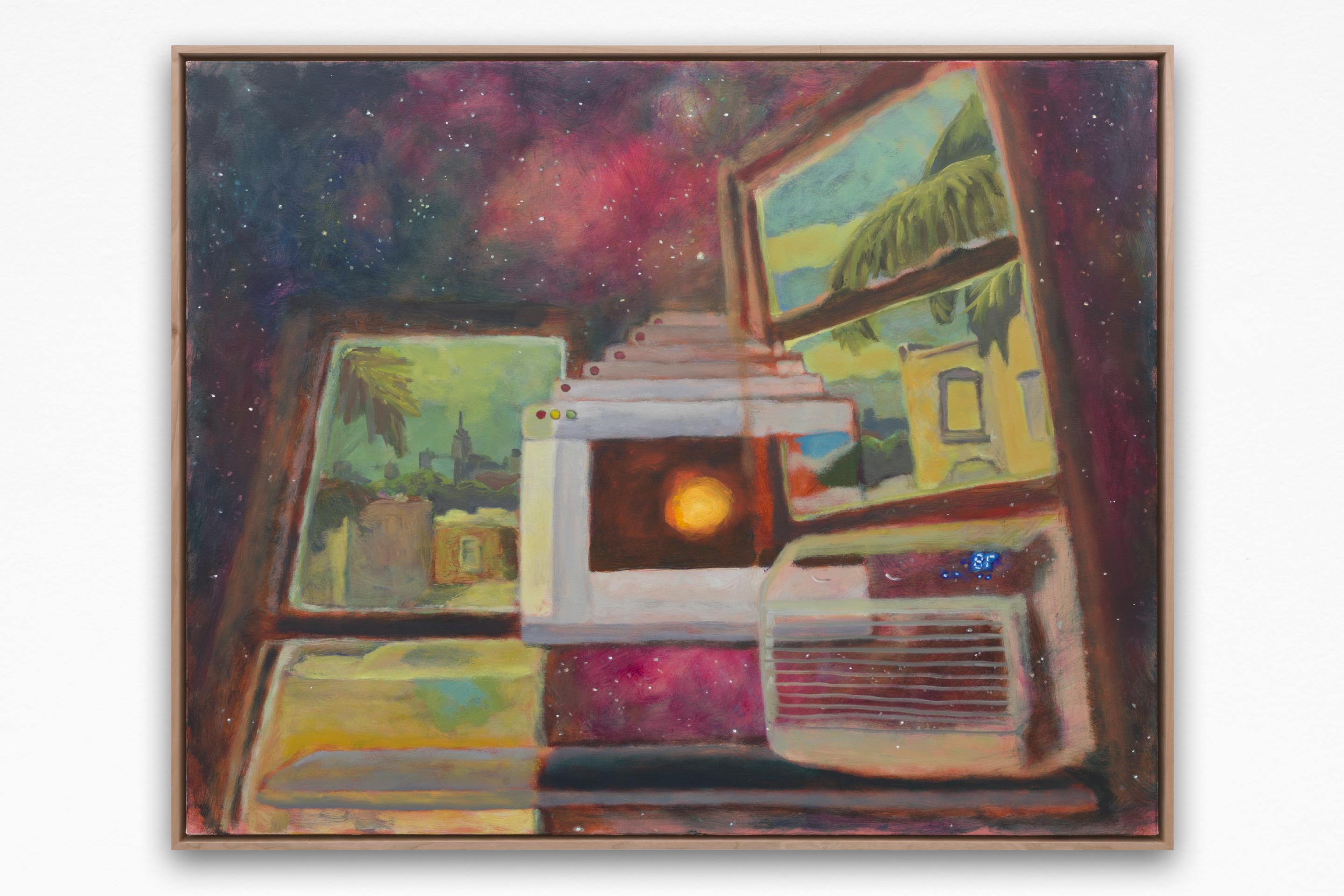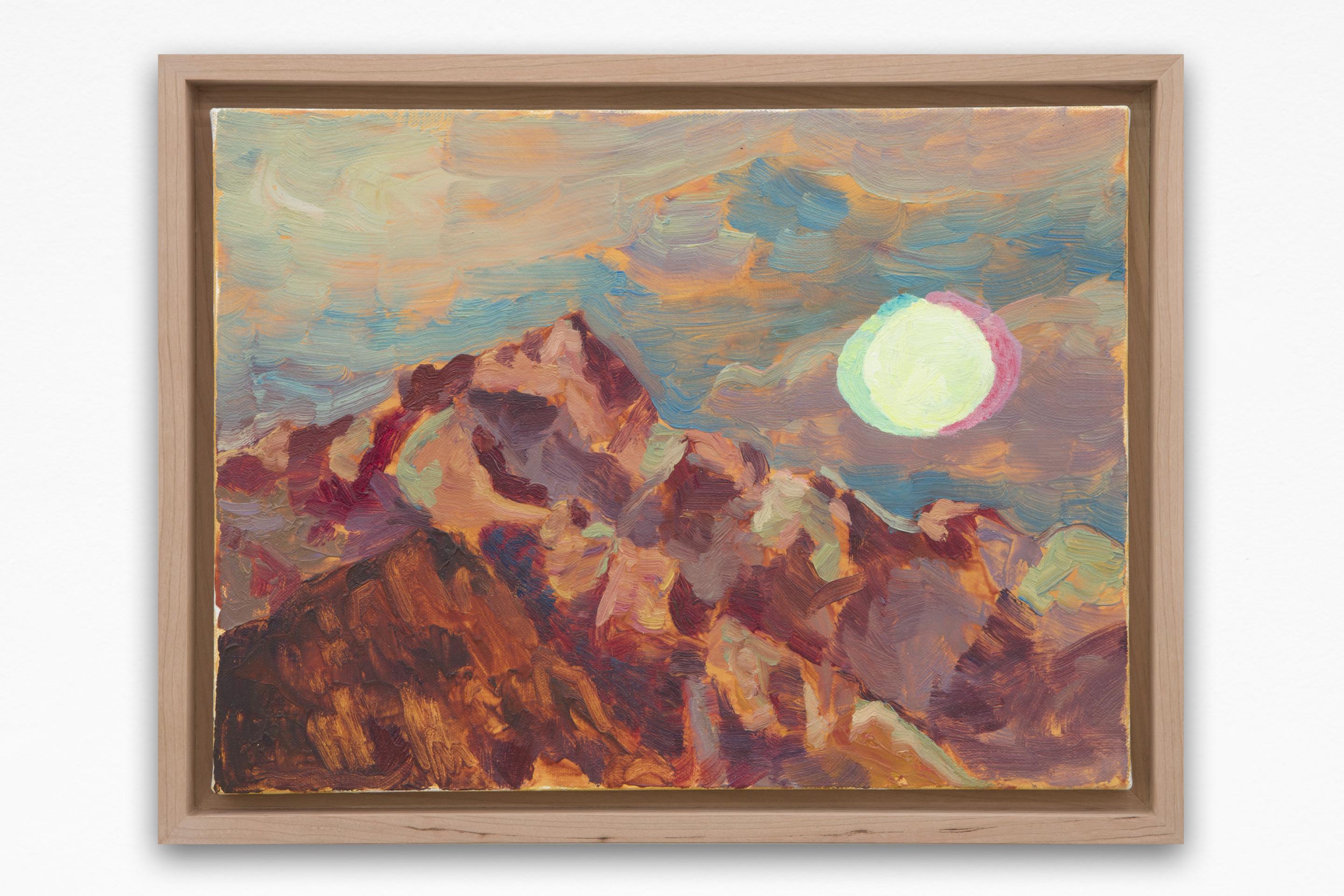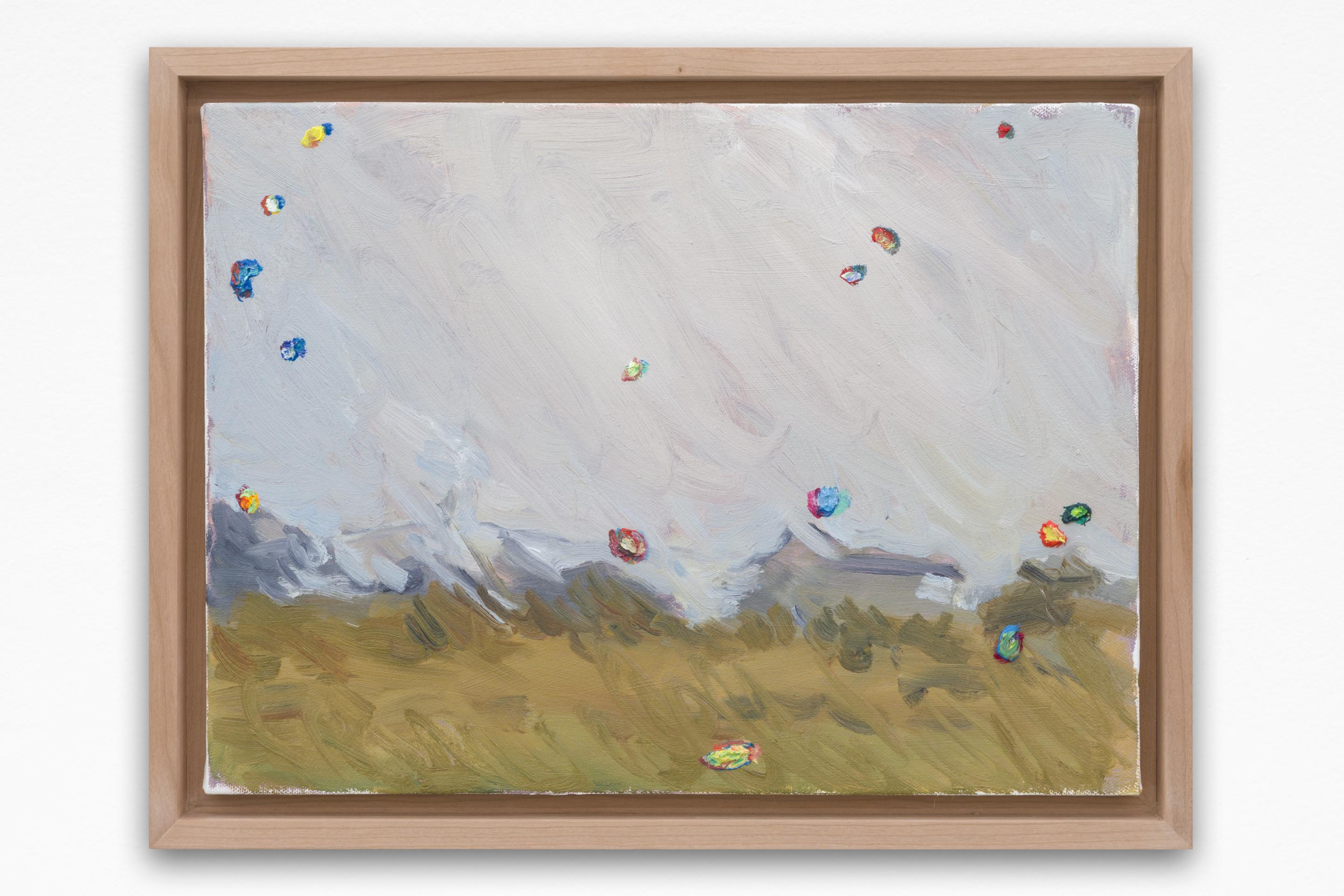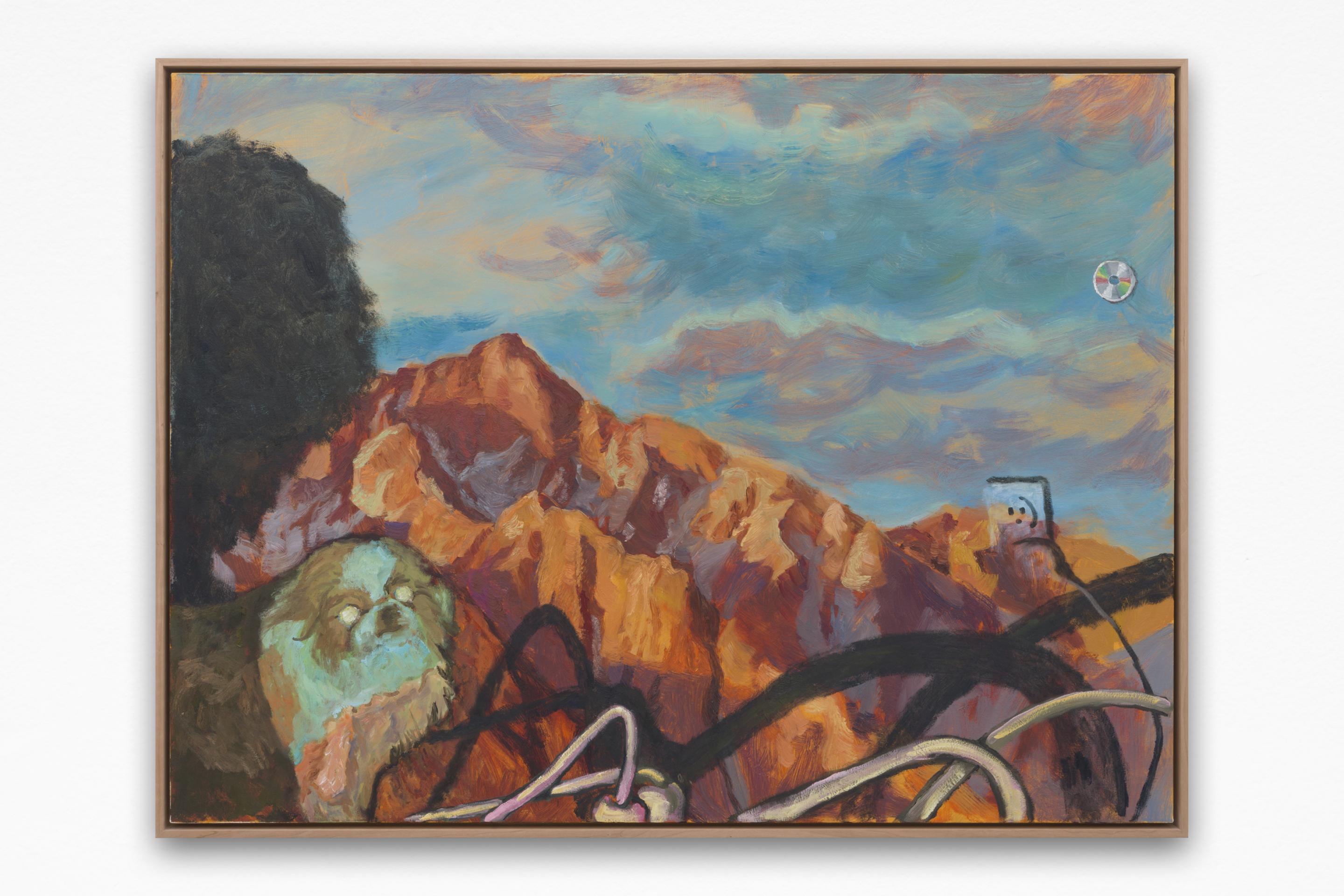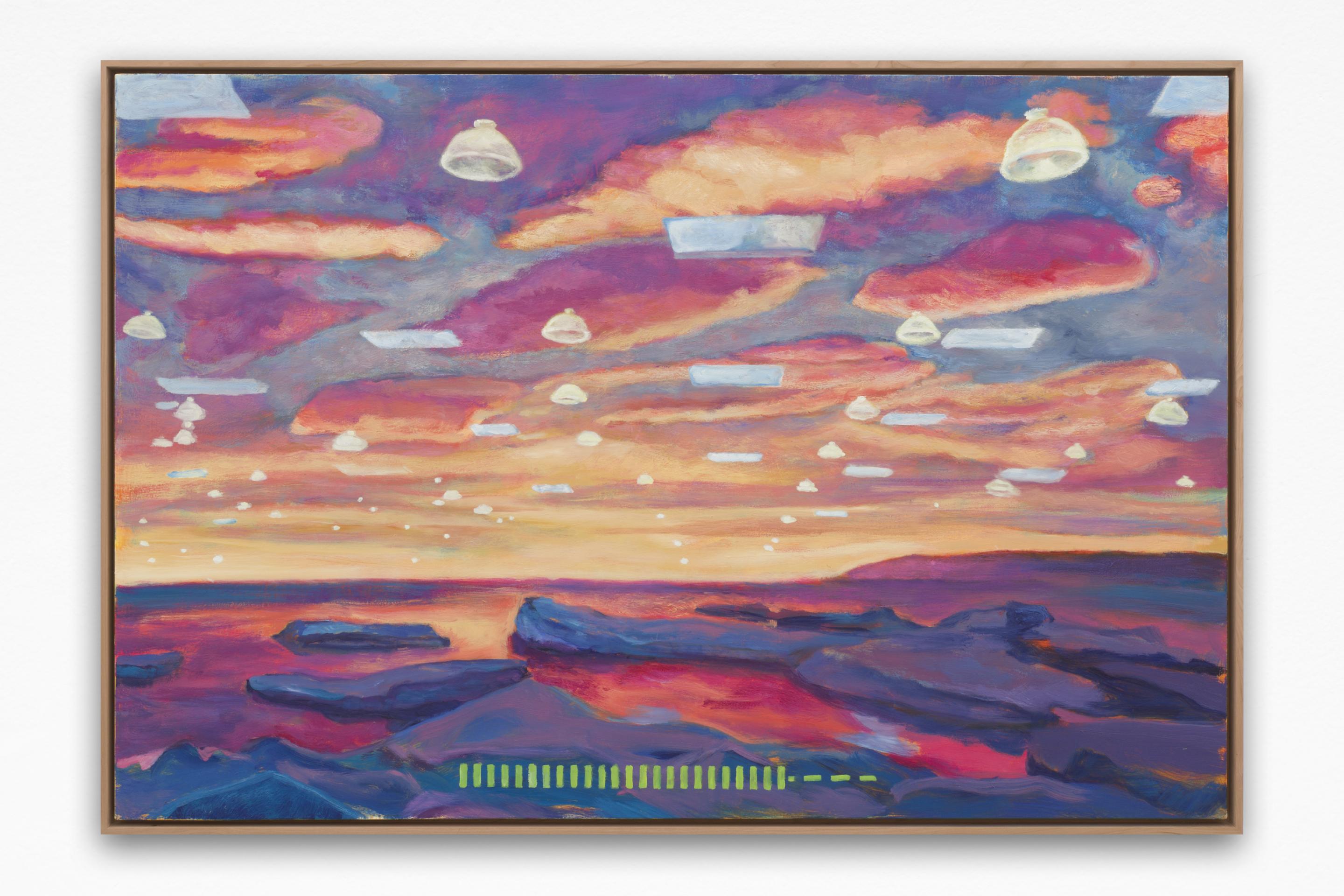TrishaBAGA
TIME MACHINE
Gió Marconi, Milan
07.10.–20.12.2022
TIME MACHINE
Gió Marconi, Milan
07.10.–20.12.2022
IT
Trisha Baga
TIME MACHINE
Inaugurazione: venerdì 7 ottobre 2022
8 ottobre – 20 dicembre 2022
martedì – sabato; 11-18
Gió Marconi, Via Tadino 20, Milano
Gió Marconi è lieto di annunciare TIME MACHINE, la seconda personale in galleria dell’artista americana Trisha Baga.
In occasione della mostra, Baga si concentra principalmente sulla pratica pittorica.
Conosciuta soprattutto per le sue video installazioni immersive, performance e ceramiche, Baga ha costruito la sua reputazione attorno alle opere che mettono alla prova i confini tra il mondo digitale e quello reale e che esplorano temi relativi alla cultura pop, all’identità di genere, alla politica e alle questioni ambientali, coinvolgendo lo spettatore con la loro atmosfera sognante e altamente poetica. Quello di Baga è un approccio tortuoso alla narrazione. I suoi video sono multistrato, simili a collage ed esenti da una struttura lineare. Il loro stile generale ricorda la navigazione online poiché le narrazioni esplicite tendono a essere per lo più rifiutate e vengono invece sostituite da sequenze di immagini slegate.
Parallelamente alla sua produzione video, Baga ha sempre avuto un interesse particolare per la ceramica e per la malleabilità del materiale argilloso. Questo interesse deriva dal suo coinvolgimento con il club della ceramica, una formazione libera di artisti di New York che si incontrano regolarmente alla Greenwich House Pottery nel West Village. I suoi soggetti principali in questa pratica includono oggetti funzionali quotidiani come computer, bollitori per il tè, macchine fotografiche, tazze da caffè o cornici. Tuttavia è ugualmente incuriosita dai ritratti di animali più svariati e fantasiosi, tra cui i più conosciuti sono i ritratti dei barboncini a forma triangolare con una fiamma sulla testa in stile punk.
Come per la maggior parte dei precedenti lavori di Baga, anche la sua recente attenzione alla pittura è nata da una collaborazione. Nel 2020, Baga ha fondato il club di pittura P-Lub con il collega artista Lu Zhang e il curatore Herb Tam. Durante il primo anno della pandemia, il trio ha creato settimanalmente un dipinto collaborativo e annunciato un episodio di Virtual Studio Visit Loop, una serie di conversazioni tra lavoratori nel settore culturale e artisti asiatici americani che hanno riflettuto sulle loro esperienze lavorative e di vita durante la pandemia. Questa collaborazione ha spinto l'artista a interessarsi maggiormente al processo pittorico e a dedicarsi più approfonditamente a questo nuovo mezzo.
In galleria è esposto un gruppo di dipinti in combinazione con diversi orologi in ceramica. I dipinti fanno parte di una nuova serie a cui Baga ha iniziato a lavorare nel 2022. Da quando è iniziata la pandemia e lo schermo del computer è diventato come una finestra sul mondo, Baga è rimasta sempre più incuriosita dalla grande varietà di immagini salvaschermo che riproducono paesaggi incontaminati: scenari marini lussureggianti ed esotici, iceberg artici e catene montuose innevate. Queste immagini proiettano un mondo naturale ideale negli schermi degli spettatori e nelle loro case.
I dipinti di Baga sono costituiti da due strati. Il primo livello raffigura un paesaggio o una scena quotidiana come la vista dalla finestra del suo appartamento, il suo studio o l'immagine del suo cane. Questi motivi piuttosto comuni vengono poi sovrapposti da un altro strato di riflessi: quelli dello schermo di un cellulare, di varie icone, di un cursore, della luce riflessa di una finestra o di una pianta.
Due dei dipinti della mostra sono intitolati Time Machine: TIME MACHINE 2016 e TIME MACHINE 2045.
Entrambe le opere raffigurano differenti vedute dalla finestra della camera da letto dell'artista a Brooklyn, collegate visivamente da una serie apparentemente infinita di schermate di computer lasciate aperte. La New York della TIME MACHINE 2016 ha una sfumatura vintage color seppia che ricorda un paesaggio urbano invernale. TIME MACHINE 2045, dall’altra parte, si compone di tinte forti e vibranti e ha uno sfondo viola quasi minaccioso: la città è ormai diventata un luogo lussureggiante ed esotico. La schermata del computer aperta mostra una palla di fuoco di un sole rosso acceso, mentre l'aria condizionata nella parte inferiore del dipinto è illuminata in modo brillante.
Attraverso la giustapposizione della New York del passato e del futuro, Baga illustra poeticamente, ma nondimeno enfaticamente, le trasformazioni dovute al surriscaldamento globale.
BIG MIRROR BIG MIRROR, il dipinto più grande della mostra, raffigura l'artista al lavoro in uno studio poco illuminato. Totalmente immersa nell'atto di dipingere, l’artista è china sul cavalletto, con la sua tavolozza di colori che sembra quasi cadere dalla tela tra le braccia dello spettatore. Questo scorcio dello studio è sovrastato da una miriade di riflessi di piccoli punti colorati e icone che toccano leggermente la superficie e avvolgono l'intera scena in una magica polvere di stelle.
Nonostante il loro soggetto a volte comune, i dipinti di Trisha Baga mantengono quell'atmosfera sognante e assolutamente poetica che era già stata un marchio di fabbrica dei suoi primi lavori.
Trisha Baga (1985, Venice, FL) è un’artista filippino-americana che vive e lavora a New York City. I suoi lavori sono stati oggetto di mostre personali presso: Pirelli HangarBicocca, Milano (2020); Fridericianum, Kassel (2020); TPW, Toronto (2018); CCC, Carpenter Center for the Visual Arts, Harvard College, Cambridge (2017); Zabludowicz Collection, Londra (2014); Whitney Museum of American Art, New York (2012); Kunstverein München, Monaco (2012).
Ha partecipato a mostre collettive presso: ARoS Aarhus Art Museum, Aarhus (2022); Gesellschaft für Moderne Kunst am Museum Ludwig, Cologne (2021); Asian Film Archive, Singapore (2021); CAC Cincinnati (2021); Hamburger Bahnhof, Berlino (2020); Folkwang Museum, Essen (2016); Yerba Buena Center for the Arts, San Francisco (2019); Kunsthalle Wien, Vienna (2019); LACMA, Los Angeles (2018); Whitney Museum of American Art, New York (2016); Centre d’Art Contemporain, Ginevra (2016); Musée d’Art Moderne de la Ville de Paris (2015); European Biennial of Contemporary Art, Zurigo (2016); Julia Stoschek Collection at ZKM, Karlsruhe (2014).
Le opere di Trisha Baga fanno parte delle collezioni di: Whitney Museum of American Art, New York; Hessel Museum of Art, Annandale-on-Hudson, New York; Moderna Museet, Stoccolma; Astrup Fearnley Museum, Oslo; Museum Ludwig, Cologna; Museum MMK für Moderne Kunst, Francoforte; Julia Stoschek Collection, Düsseldorf; Museo di Arte Moderna e Contemporanea di Trento e Rovereto; Aïshti Foundation, Beirut, tra le altre.
TIME MACHINE
Inaugurazione: venerdì 7 ottobre 2022
8 ottobre – 20 dicembre 2022
martedì – sabato; 11-18
Gió Marconi, Via Tadino 20, Milano
Gió Marconi è lieto di annunciare TIME MACHINE, la seconda personale in galleria dell’artista americana Trisha Baga.
In occasione della mostra, Baga si concentra principalmente sulla pratica pittorica.
Conosciuta soprattutto per le sue video installazioni immersive, performance e ceramiche, Baga ha costruito la sua reputazione attorno alle opere che mettono alla prova i confini tra il mondo digitale e quello reale e che esplorano temi relativi alla cultura pop, all’identità di genere, alla politica e alle questioni ambientali, coinvolgendo lo spettatore con la loro atmosfera sognante e altamente poetica. Quello di Baga è un approccio tortuoso alla narrazione. I suoi video sono multistrato, simili a collage ed esenti da una struttura lineare. Il loro stile generale ricorda la navigazione online poiché le narrazioni esplicite tendono a essere per lo più rifiutate e vengono invece sostituite da sequenze di immagini slegate.
Parallelamente alla sua produzione video, Baga ha sempre avuto un interesse particolare per la ceramica e per la malleabilità del materiale argilloso. Questo interesse deriva dal suo coinvolgimento con il club della ceramica, una formazione libera di artisti di New York che si incontrano regolarmente alla Greenwich House Pottery nel West Village. I suoi soggetti principali in questa pratica includono oggetti funzionali quotidiani come computer, bollitori per il tè, macchine fotografiche, tazze da caffè o cornici. Tuttavia è ugualmente incuriosita dai ritratti di animali più svariati e fantasiosi, tra cui i più conosciuti sono i ritratti dei barboncini a forma triangolare con una fiamma sulla testa in stile punk.
Come per la maggior parte dei precedenti lavori di Baga, anche la sua recente attenzione alla pittura è nata da una collaborazione. Nel 2020, Baga ha fondato il club di pittura P-Lub con il collega artista Lu Zhang e il curatore Herb Tam. Durante il primo anno della pandemia, il trio ha creato settimanalmente un dipinto collaborativo e annunciato un episodio di Virtual Studio Visit Loop, una serie di conversazioni tra lavoratori nel settore culturale e artisti asiatici americani che hanno riflettuto sulle loro esperienze lavorative e di vita durante la pandemia. Questa collaborazione ha spinto l'artista a interessarsi maggiormente al processo pittorico e a dedicarsi più approfonditamente a questo nuovo mezzo.
In galleria è esposto un gruppo di dipinti in combinazione con diversi orologi in ceramica. I dipinti fanno parte di una nuova serie a cui Baga ha iniziato a lavorare nel 2022. Da quando è iniziata la pandemia e lo schermo del computer è diventato come una finestra sul mondo, Baga è rimasta sempre più incuriosita dalla grande varietà di immagini salvaschermo che riproducono paesaggi incontaminati: scenari marini lussureggianti ed esotici, iceberg artici e catene montuose innevate. Queste immagini proiettano un mondo naturale ideale negli schermi degli spettatori e nelle loro case.
I dipinti di Baga sono costituiti da due strati. Il primo livello raffigura un paesaggio o una scena quotidiana come la vista dalla finestra del suo appartamento, il suo studio o l'immagine del suo cane. Questi motivi piuttosto comuni vengono poi sovrapposti da un altro strato di riflessi: quelli dello schermo di un cellulare, di varie icone, di un cursore, della luce riflessa di una finestra o di una pianta.
Due dei dipinti della mostra sono intitolati Time Machine: TIME MACHINE 2016 e TIME MACHINE 2045.
Entrambe le opere raffigurano differenti vedute dalla finestra della camera da letto dell'artista a Brooklyn, collegate visivamente da una serie apparentemente infinita di schermate di computer lasciate aperte. La New York della TIME MACHINE 2016 ha una sfumatura vintage color seppia che ricorda un paesaggio urbano invernale. TIME MACHINE 2045, dall’altra parte, si compone di tinte forti e vibranti e ha uno sfondo viola quasi minaccioso: la città è ormai diventata un luogo lussureggiante ed esotico. La schermata del computer aperta mostra una palla di fuoco di un sole rosso acceso, mentre l'aria condizionata nella parte inferiore del dipinto è illuminata in modo brillante.
Attraverso la giustapposizione della New York del passato e del futuro, Baga illustra poeticamente, ma nondimeno enfaticamente, le trasformazioni dovute al surriscaldamento globale.
BIG MIRROR BIG MIRROR, il dipinto più grande della mostra, raffigura l'artista al lavoro in uno studio poco illuminato. Totalmente immersa nell'atto di dipingere, l’artista è china sul cavalletto, con la sua tavolozza di colori che sembra quasi cadere dalla tela tra le braccia dello spettatore. Questo scorcio dello studio è sovrastato da una miriade di riflessi di piccoli punti colorati e icone che toccano leggermente la superficie e avvolgono l'intera scena in una magica polvere di stelle.
Nonostante il loro soggetto a volte comune, i dipinti di Trisha Baga mantengono quell'atmosfera sognante e assolutamente poetica che era già stata un marchio di fabbrica dei suoi primi lavori.
Trisha Baga (1985, Venice, FL) è un’artista filippino-americana che vive e lavora a New York City. I suoi lavori sono stati oggetto di mostre personali presso: Pirelli HangarBicocca, Milano (2020); Fridericianum, Kassel (2020); TPW, Toronto (2018); CCC, Carpenter Center for the Visual Arts, Harvard College, Cambridge (2017); Zabludowicz Collection, Londra (2014); Whitney Museum of American Art, New York (2012); Kunstverein München, Monaco (2012).
Ha partecipato a mostre collettive presso: ARoS Aarhus Art Museum, Aarhus (2022); Gesellschaft für Moderne Kunst am Museum Ludwig, Cologne (2021); Asian Film Archive, Singapore (2021); CAC Cincinnati (2021); Hamburger Bahnhof, Berlino (2020); Folkwang Museum, Essen (2016); Yerba Buena Center for the Arts, San Francisco (2019); Kunsthalle Wien, Vienna (2019); LACMA, Los Angeles (2018); Whitney Museum of American Art, New York (2016); Centre d’Art Contemporain, Ginevra (2016); Musée d’Art Moderne de la Ville de Paris (2015); European Biennial of Contemporary Art, Zurigo (2016); Julia Stoschek Collection at ZKM, Karlsruhe (2014).
Le opere di Trisha Baga fanno parte delle collezioni di: Whitney Museum of American Art, New York; Hessel Museum of Art, Annandale-on-Hudson, New York; Moderna Museet, Stoccolma; Astrup Fearnley Museum, Oslo; Museum Ludwig, Cologna; Museum MMK für Moderne Kunst, Francoforte; Julia Stoschek Collection, Düsseldorf; Museo di Arte Moderna e Contemporanea di Trento e Rovereto; Aïshti Foundation, Beirut, tra le altre.
EN
Trisha Baga
TIME MACHINE
Opening: Friday, October 7, 2022
October 8 – December 20, 2022
From Tuesday to Saturday, 11am - 6pm
Gió Marconi, Via Tadino 20, Milan
Gió Marconi is very pleased to announce TIME MACHINE, American artist’s Trisha Baga’s second solo exhibition at the gallery.
For this exhibition, Baga focuses primarily on their painting practice.
Best known for their immersive video installations, performances and ceramics, Baga has built a reputation for works that test the boundaries between the digital and the real worlds and that explore themes of pop culture, gender identity, politics and environmental issues while nevertheless enticing the viewer with their dreamy and utterly poetic atmosphere. Baga’s is a meandering approach to storytelling. Their videos are multi-layered, collage-like and exempt of a linear structure. Their overall style is reminiscent of online browsing as overt narratives tend to be mostly rejected and are instead being substituted by loose sequences of images.
Parallel to their video production, Baga has always had a particular interest in ceramics - the malleability of the material clay and the ceramic production itself. This interest derives from their involvement with the ceramics club, a loose formation of New York artists who regularly meet at the Greenwich House Pottery in the West Village. Their core pottery subjects include everyday functional objects such as computers, tea kettles, cameras, coffee mugs or picture frames. But they are equally intrigued by the most varied and inventive animal portraits, the highlight of the latter being punk-like, flame-headed, triangularly shaped poodle portraits.
As with most of Baga’s previous work groups, also their recent focus on painting originated from a collaboration. In 2020, Baga founded the painting club P-Lub with fellow artist Lu Zhang and the curator Herb Tam. Throughout the first year of the pandemic, the trio would create one collaborative painting per week and announce an episode of Virtual Studio Visit Loop, a series of conversations between Asian American workers in the cultural sector and artists who reflected on their working and living experiences during the pandemic. This collaboration prompted the artist to become more interested in the process of painting and to devote themselves more thoroughly to this new medium.
On display at the gallery is a group of paintings in combination with several ceramic clocks.
The paintings are part of a new series that Baga began to work on in 2022. Ever since the pandemic started and the computer screen turned into a window to the world, Baga became increasingly intrigued by the large variety of screen saver images which feature the most pristine landscapes - from lush, exotic seascapes and regal arctic icebergs to snow-covered, sunfilled mountain ranges. These images transport an ideal natural world onto the viewers’ screens and into their real lifes.
Baga’s paintings consist of two layers. The first layer depicts a landscape or an everyday scene like the view from the artist’s apartment window, a glimpse into their studio or an image of their dog. These rather mundane motifs are then superimposed with another layer of reflections - be that the reflection of a cell phone screen, various computer icons, a cursor, an illuminated apartment window or a houseplant.
Two of the paintings in the exhibition are titled Time Machine: TIME MACHINE 2016 respectively TIME MACHINE 2045. Both paintings depict different views from the artist’s Brooklyn bedroom window that are visually connected by a seemingly endless array of open computer windows. The New York in the 2016 TIME MACHINE has a sepia colored vintage tinge resembling a wintery cityscape. TIME MACHINE 2045 on the other hand consists of strong, vibrant hues and has an almost menacing, violet background: the city has now become a lush and exotic place with palm trees. The open computer window shows a bright red fireball of a sun, whereas the air conditioning in the lower part of the painting is brightly illuminated. Through the juxtaposition of the New York of the past and the future, Baga poetically but nevertheless emphatically illustrates the transformations that a warming climate entails.
The centerpiece and largest painting of the exhibition, BIG MIRROR BIG MIRROR, shows the artist at work in a dimly lit studio. Totally immersed in the act of painting, they are bent over the easel, their lusciously colorful color palette almost falling out of the canvas and into the viewer’s arms. This studio view is overlaid by a myriad reflections of small, colored dots and computer icons which lightly touch the surface and envelop the whole scene in magical stardust. Despite their at times trivial subject matter, Baga’s paintings uphold that dreamy and utterly poetic atmosphere that had already been a trademark of her earlier works.
Trisha Baga They/Them (b. 1985, Venice, FL) is a New York City-based, Filipino-American artist.
Their work has been the subject of solo exhibitions at Pirelli HangarBicocca, Milan (2020); Fridericianum, Kassel (2020); TPW, Toronto (2018); CCC, Carpenter Center for the Visual Arts, Harvard College, Cambridge (2017); Zabludowicz Collection, London (2014); Whitney Museum of American Art, New York (2012); Kunstverein München, Munich (2012).
Baga has participated in group exhibitions at ARoS Aarhus Art Museum, Aarhus (2022); Gesellschaft für Moderne Kunst am Museum Ludwig, Cologne (2021); Asian Film Archive, Singapore (2021); CAC Cincinnati (2021); Hamburger Bahnhof, Berlin (2020); Folkwang Museum, Essen (2016); Yerba Buena Center for the Arts, San Francisco (2019); Kunsthalle Wien, Vienna (2019); LACMA, Los Angeles (2018); Whitney Museum of American Art, New York (2016); Centre d’Art Contemporain, Geneva (2016); Musée d’Art Moderne de la Ville de Paris (2015); European Biennial of Contemporary Art, Zurich (2016); Julia Stoschek Collection at ZKM, Karlsruhe (2014).
Their work is in the collections of the Whitney Museum of American Art, New York; Hessel Museum of Art, Annandale-on-Hudson, New York; Moderna Museet, Stockholm; Astrup Fearnley Museum, Oslo; Museum Ludwig, Cologne; Museum MMK für Moderne Kunst, Frankfurt; Julia Stoschek Collection, Düsseldorf; Museo di Arte Moderna e Contemporanea di Trento e Rovereto; Aïshti Foundation, Beirut, among others.
TIME MACHINE
Opening: Friday, October 7, 2022
October 8 – December 20, 2022
From Tuesday to Saturday, 11am - 6pm
Gió Marconi, Via Tadino 20, Milan
Gió Marconi is very pleased to announce TIME MACHINE, American artist’s Trisha Baga’s second solo exhibition at the gallery.
For this exhibition, Baga focuses primarily on their painting practice.
Best known for their immersive video installations, performances and ceramics, Baga has built a reputation for works that test the boundaries between the digital and the real worlds and that explore themes of pop culture, gender identity, politics and environmental issues while nevertheless enticing the viewer with their dreamy and utterly poetic atmosphere. Baga’s is a meandering approach to storytelling. Their videos are multi-layered, collage-like and exempt of a linear structure. Their overall style is reminiscent of online browsing as overt narratives tend to be mostly rejected and are instead being substituted by loose sequences of images.
Parallel to their video production, Baga has always had a particular interest in ceramics - the malleability of the material clay and the ceramic production itself. This interest derives from their involvement with the ceramics club, a loose formation of New York artists who regularly meet at the Greenwich House Pottery in the West Village. Their core pottery subjects include everyday functional objects such as computers, tea kettles, cameras, coffee mugs or picture frames. But they are equally intrigued by the most varied and inventive animal portraits, the highlight of the latter being punk-like, flame-headed, triangularly shaped poodle portraits.
As with most of Baga’s previous work groups, also their recent focus on painting originated from a collaboration. In 2020, Baga founded the painting club P-Lub with fellow artist Lu Zhang and the curator Herb Tam. Throughout the first year of the pandemic, the trio would create one collaborative painting per week and announce an episode of Virtual Studio Visit Loop, a series of conversations between Asian American workers in the cultural sector and artists who reflected on their working and living experiences during the pandemic. This collaboration prompted the artist to become more interested in the process of painting and to devote themselves more thoroughly to this new medium.
On display at the gallery is a group of paintings in combination with several ceramic clocks.
The paintings are part of a new series that Baga began to work on in 2022. Ever since the pandemic started and the computer screen turned into a window to the world, Baga became increasingly intrigued by the large variety of screen saver images which feature the most pristine landscapes - from lush, exotic seascapes and regal arctic icebergs to snow-covered, sunfilled mountain ranges. These images transport an ideal natural world onto the viewers’ screens and into their real lifes.
Baga’s paintings consist of two layers. The first layer depicts a landscape or an everyday scene like the view from the artist’s apartment window, a glimpse into their studio or an image of their dog. These rather mundane motifs are then superimposed with another layer of reflections - be that the reflection of a cell phone screen, various computer icons, a cursor, an illuminated apartment window or a houseplant.
Two of the paintings in the exhibition are titled Time Machine: TIME MACHINE 2016 respectively TIME MACHINE 2045. Both paintings depict different views from the artist’s Brooklyn bedroom window that are visually connected by a seemingly endless array of open computer windows. The New York in the 2016 TIME MACHINE has a sepia colored vintage tinge resembling a wintery cityscape. TIME MACHINE 2045 on the other hand consists of strong, vibrant hues and has an almost menacing, violet background: the city has now become a lush and exotic place with palm trees. The open computer window shows a bright red fireball of a sun, whereas the air conditioning in the lower part of the painting is brightly illuminated. Through the juxtaposition of the New York of the past and the future, Baga poetically but nevertheless emphatically illustrates the transformations that a warming climate entails.
The centerpiece and largest painting of the exhibition, BIG MIRROR BIG MIRROR, shows the artist at work in a dimly lit studio. Totally immersed in the act of painting, they are bent over the easel, their lusciously colorful color palette almost falling out of the canvas and into the viewer’s arms. This studio view is overlaid by a myriad reflections of small, colored dots and computer icons which lightly touch the surface and envelop the whole scene in magical stardust. Despite their at times trivial subject matter, Baga’s paintings uphold that dreamy and utterly poetic atmosphere that had already been a trademark of her earlier works.
Trisha Baga They/Them (b. 1985, Venice, FL) is a New York City-based, Filipino-American artist.
Their work has been the subject of solo exhibitions at Pirelli HangarBicocca, Milan (2020); Fridericianum, Kassel (2020); TPW, Toronto (2018); CCC, Carpenter Center for the Visual Arts, Harvard College, Cambridge (2017); Zabludowicz Collection, London (2014); Whitney Museum of American Art, New York (2012); Kunstverein München, Munich (2012).
Baga has participated in group exhibitions at ARoS Aarhus Art Museum, Aarhus (2022); Gesellschaft für Moderne Kunst am Museum Ludwig, Cologne (2021); Asian Film Archive, Singapore (2021); CAC Cincinnati (2021); Hamburger Bahnhof, Berlin (2020); Folkwang Museum, Essen (2016); Yerba Buena Center for the Arts, San Francisco (2019); Kunsthalle Wien, Vienna (2019); LACMA, Los Angeles (2018); Whitney Museum of American Art, New York (2016); Centre d’Art Contemporain, Geneva (2016); Musée d’Art Moderne de la Ville de Paris (2015); European Biennial of Contemporary Art, Zurich (2016); Julia Stoschek Collection at ZKM, Karlsruhe (2014).
Their work is in the collections of the Whitney Museum of American Art, New York; Hessel Museum of Art, Annandale-on-Hudson, New York; Moderna Museet, Stockholm; Astrup Fearnley Museum, Oslo; Museum Ludwig, Cologne; Museum MMK für Moderne Kunst, Frankfurt; Julia Stoschek Collection, Düsseldorf; Museo di Arte Moderna e Contemporanea di Trento e Rovereto; Aïshti Foundation, Beirut, among others.
